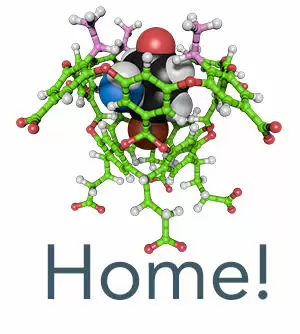Gibb, C. L. D.; Li, X.; Gibb, B. C. Adjusting the binding thermodynamics, kinetics, and orientation of guests within large synthetic hydrophobic pockets. Proceedings of the National Academy of Sciences 2002, 99, 4857-4862.
Abstract
Kinetic analysis of the host guest complexation of a large, open molecular basket and a highly complementary adamantoid guest reveals that for these types of systems a dissociative mechanism is in operation. Hence, the resident adamantyl guest must completely vacate the cavity before another guest molecule can move in to replace it. As a result of the rigid nature of the host, the energy barrier to this process is relatively high, about 16 kcal mol−1 at room temperature. Modifying the cavity of the host by dangling either a methyl group or a hydroxyl group from the portal rim alters the thermodynamic binding profile of these hosts. 1H NMR shift data analysis also reveals that these functional groups can adjust the orientation that monosubstituted guests adopt within the cavity. Additionally, 1H NMR studies of the binding of (E)1,4-dibromoadamantane allow the observation of two energetically similar diastereomeric complexes. An examination of this guest binding to the three hosts reveals that the interchange between the isomers is much faster than the entry and egression rates, and that the functional groups at the rim of each cavity influence both the rates of reorientation and the equilibrium relating the isomers.
Last updated on 02/09/2023

